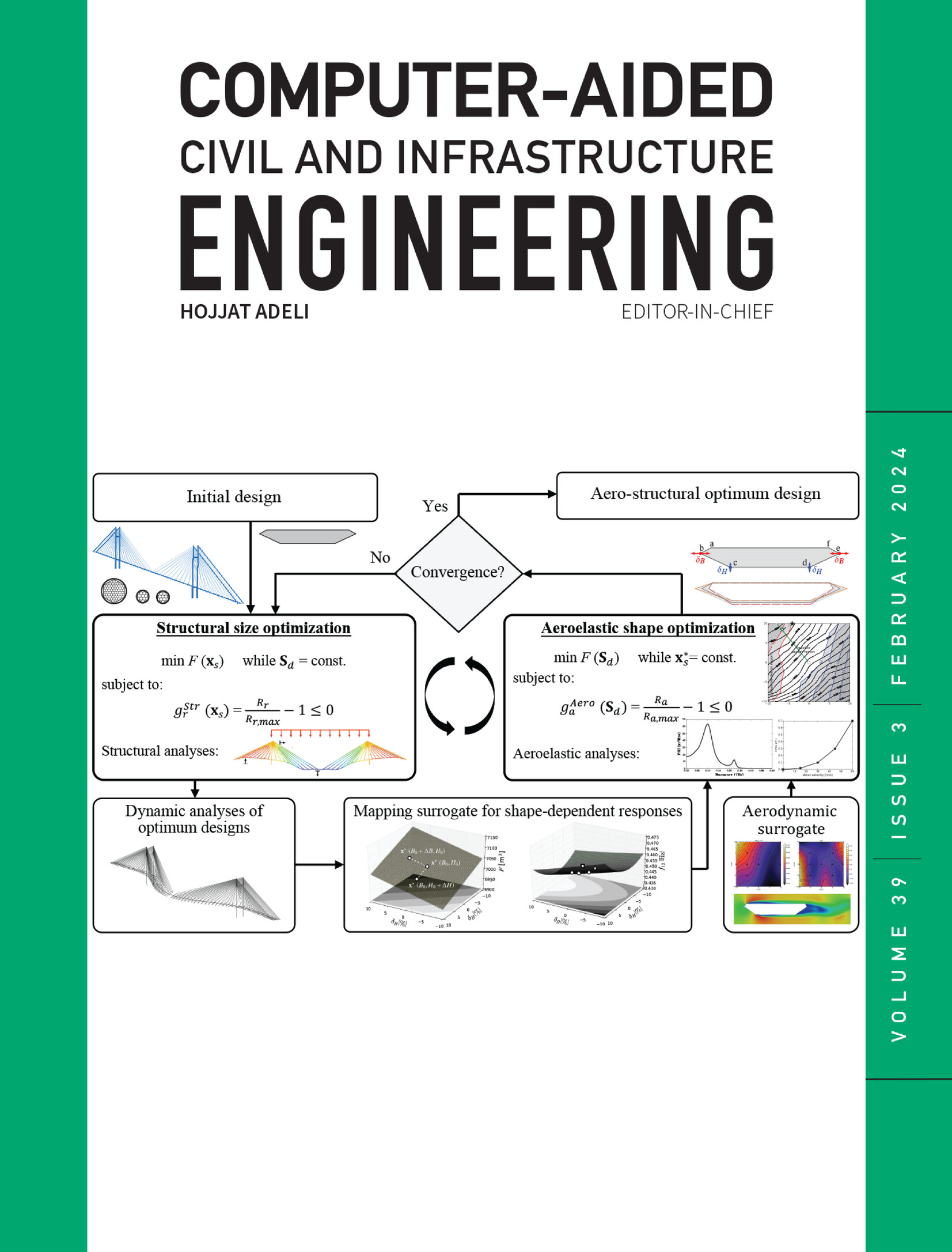基于长短期记忆的无约束路面冻结深度和融化时间实时预测模型
IF 8.5
1区 工程技术
Q1 COMPUTER SCIENCE, INTERDISCIPLINARY APPLICATIONS
引用次数: 0
摘要
寒冷地区无粘结路面层冻结深度和融化时间的预测是路面设计和管理的重要任务。本研究开发了基于长短期记忆(LSTM)的编码器-解码器模型,以气温为唯一输入变量,准确预测冻结深度和解冻时间。这些模型旨在提前14天预测融化时间,以便进行有效的路面管理,使用的数据来自美国联邦公路管理局提供的长期路面性能项目数据库。这个数据库包含大量关于气温和冰冻状态的记录。LSTM模型使用从北美四个冬季严寒地区(魁北克、明尼苏达州、安大略省和缅因州)收集的数据进行训练,随后使用冬季严寒地区(南达科他州和佛蒙特州)和冬季温和地区(爱达荷州和怀俄明州)的数据进行验证。在验证阶段,模型在极端寒冷地区表现出较强的性能,预测的冻结深度与实测值仅相差0.05至0.20 m,解冻日期预测仅相差1至3天。然而,在暖冬地区,模型的准确性较低,冻结深度差异在0.10 ~ 0.40 m之间,解冻日期延迟3 ~ 6天。与现有的分析模型和经验模型相比,本研究建立的LSTM预测模型在保持令人满意的精度的同时,提供了更大的方便性。本文章由计算机程序翻译,如有差异,请以英文原文为准。
Long short‐term memory‐based real‐time prediction models for freezing depth and thawing time in unbound pavement layers
The prediction of freezing depth and thawing time of unbound pavement layers in cold regions is a critical task in pavement design and management. This study developed long short‐term memory (LSTM)‐based encoder–decoder models to accurately predict freezing depth and thawing time, with air temperature as the sole input variable. The models, which aim to offer a 14‐day advance prediction of the thawing time for effective pavement management, utilized data from the Long‐Term Pavement Performance program's database, provided by the Federal Highway Administration in United States. This database contains extensive records on air temperature and freezing states. The LSTM models were trained using data collected from four regions in North America with severely cold winters (Quebec, Minnesota, Ontario, and Maine) and subsequently validated using data from both severely cold (South Dakota and Vermont) and mild (Idaho and Wyoming) winter regions. During the validation phase, the models demonstrated strong performance in the severely cold regions, with predicted freezing depths deviating from the measured values by only 0.05 to 0.20 m and thawing date predictions differing by just 1 to 3 days. However, in the mild winter regions, the models showed less accuracy, with freezing depth differences ranging from 0.10 to 0.40 m and thawing date delays of 3–6 days. Compared to existing analytical and empirical models, the LSTM prediction models developed in this study provide enhanced convenience while maintaining a satisfactory level of accuracy.
求助全文
通过发布文献求助,成功后即可免费获取论文全文。
去求助
来源期刊
CiteScore
17.60
自引率
19.80%
发文量
146
审稿时长
1 months
期刊介绍:
Computer-Aided Civil and Infrastructure Engineering stands as a scholarly, peer-reviewed archival journal, serving as a vital link between advancements in computer technology and civil and infrastructure engineering. The journal serves as a distinctive platform for the publication of original articles, spotlighting novel computational techniques and inventive applications of computers. Specifically, it concentrates on recent progress in computer and information technologies, fostering the development and application of emerging computing paradigms.
Encompassing a broad scope, the journal addresses bridge, construction, environmental, highway, geotechnical, structural, transportation, and water resources engineering. It extends its reach to the management of infrastructure systems, covering domains such as highways, bridges, pavements, airports, and utilities. The journal delves into areas like artificial intelligence, cognitive modeling, concurrent engineering, database management, distributed computing, evolutionary computing, fuzzy logic, genetic algorithms, geometric modeling, internet-based technologies, knowledge discovery and engineering, machine learning, mobile computing, multimedia technologies, networking, neural network computing, optimization and search, parallel processing, robotics, smart structures, software engineering, virtual reality, and visualization techniques.

 求助内容:
求助内容: 应助结果提醒方式:
应助结果提醒方式:


